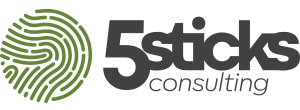Occupational Hygiene Consulting
Occupational Hygiene Services
Monitoring for airborne dust in the workplace helps in the understanding of worker exposures and potential for adverse health effects. Pneumoconiosis is a lung disease caused by the inhalation of dusts that are deposited deep in the lungs causing damage.
Fit testing ensures that correctly fitting respirators worn in the workplace are providing the required level of protection. This is done by measuring the effectiveness of the seal between the respirator and the wearer’s face.
Understanding and controlling common pollutants in the indoor environment can help reduce the risk of indoor health concerns. Poor indoor air quality can be the result of the release of gases or particles, inadequate ventilation, as well as high temperature and humidity levels.
Hearing protection fit testing determines how effective a hearing protection device is for an individual when worn correctly. This is typically carried out using a fit testing hardware and/or software system. Fit testing measures the noise reduction a hearing protection device provides for an individual worker.
Measuring noise levels in the workplace, including worker noise exposure, is an important part of a workplace hearing conservation and noise control program. Measuring noise levels helps identify work locations where there are noise problems and identifies workers who may be exposed to noise levels that can cause hearing loss. To assess noise levels a sound level meter (SLM – area noise) or noise dose meter (NDM – personal noise) is used.
Australia's Leading Occupational Hygiene Consultants

Dedicated Expertise
We enjoy a diverse client base working across multiple industries.

High Availability
We have consultants where you need them, when you need them.

Regulatory Inights
Our consultants are constantly alert for emerging regulatory changes which may impact our clients.

Certified & Accredited
Suitably qualified consultants to meet your regulatory requirements.
“You’ll receive unparalleled knowledge backed by years of Occupational Hygiene field experience gained in a variety of industries.”
Greg Dean, Managing director
Enquire About Our
Occupational Hygiene Services
You can feel confident that your business’ Occupational Hygiene requirements will be covered diligently by our team of highly qualified Occupational Hygiene consultants.
